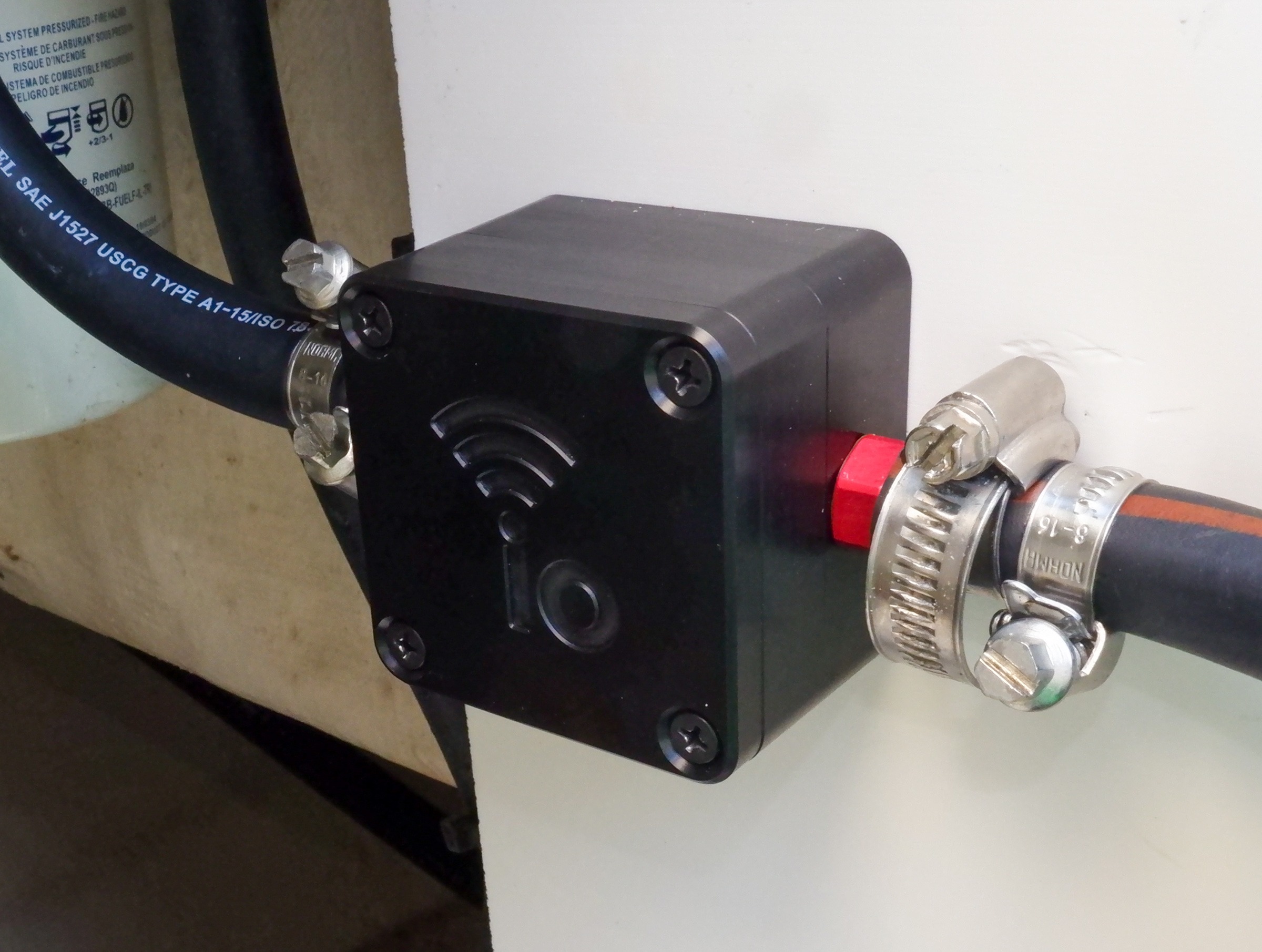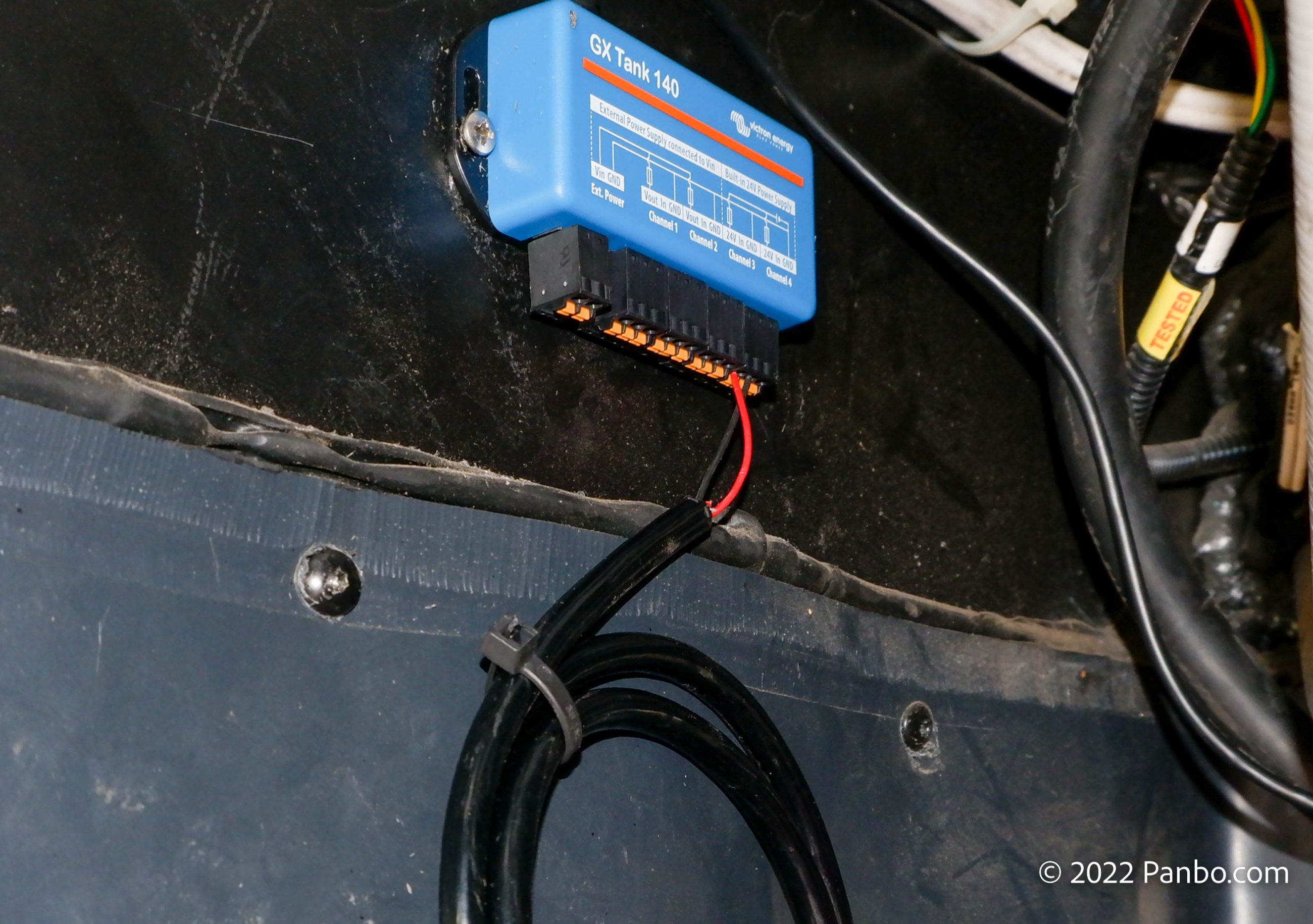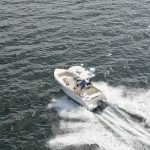LowranceNet 2, look what’s in the basement!

Check this out (big size
)! It’s the most elaborate test setup a manufacturer ever loaned me, and I learned a lot from it. What you’re looking at is a LowranceNet (aka NMEA 2000) network suitable for, say, a spiffy T-top fishing boat. On top are the sensors: GPS, fuel flow, 3 tank levels, water speed, and 2 water temps. On the bottom are 4 digital gauges capable of showing most any data on the network, plus the LCX 111c HD (hard drive!) fishfinder/plotter, which can also display gauge type data. It all works together quite nicely, and in Miami I got a ride on an actual T-top equipped with all this gear plus a pair of NMEA-2000–talking Evinrude Etec outboards. I saw smooth data integration across the network, with flexible and redundant displays. Oh, there’s a kink or two, which I’ll write about later, but today I want to address my earlier concerns about LowranceNet. If you recall, most of the gear above is NMEA certified but the backbone plugs and cabling are not. Back in Oct. I understood there’d be some resolution to this issue, but so far…nothing. However, I’ve been told by a Lowrance engineer that this cable, though much smaller and less expensive, meets the same specs for shielding, etc. as the certified stuff I tried last summer. Some of which I’m still holding on to (thank you, Raymarine and Maretron). That’s why I was able to try a simple patch cable (above at left) to connect a regular NMEA 2000 device to the LowranceNet backbone. I was even able to marry the Lowrance backbone to the certified backbone with various Maretron units and an E120 hanging off it. Everything powered up and was relatively happy. I do hope Lowrance can get its cable fully legit, but if it works fine—and it seems to—does it really matter?












Yes, the connector does matter. The whole point of a network standard is interoperability. The vendors all seem to be trying to hide behine proprietary connectors as their last wall of defense to customers buying multi-vendor systems.
This battle was fought 20 years ago in the computer industry, it’s OVER. Give the customer real interoperability and they’ll buy more stuff more frequently because it’s easy to hook up!
I absolutely agree. Common connections are the key for adoption of NMEA 2000 by end users, such as myself. I am sick to death or proprietary protocols and connections on marine electronics.
If nothing else, consider the advantage to boat manufacturers of being able to install a standard loom of instrument wiring, with the dealer then able to add the customers selection of components at a minimum installation cost.
Devil’s advocate: the important thing is that Lowrance has made the cabling much less expense.
Response to Devil: Customer’s do not want a single vendor solution, they want the freedom to pick “the best” for each function. The more complicated the system (proprietary = complicated), the more the cost of the hardware (this includes cables) becomes irrelevant because the total solution cost is dominated by the labor expense to have it installed and configured.
Additionally, don’t forget the market for upgrades. I have Simrad gear at present, but Simrad has now changed their cabling on new equipment. When I do finally upgrade, it will NOT be Simrad, due to this issue.
Given an industry standard wiring, I would be much more likely to periodically update and replace equipment with newer technologies. But I can’t face the hassle/cost/time to re-wire given already working equipment. So Simrad has protected its market, because they have a proprietary cable set up. But they have lost sales because I can’t upgrade without changing the existing cable, and as long as I have to rewire I’ll look at other vendors anyway.
Devil: Who said anything about single vendor? My point was that if all it takes is a simple adaptor to share data with multiple vendors, the adaptor is no big deal. But the point is moot: NMEA just announced that standard cabling/connectors are about to get less expensive, and Lowrance is going to change all its connectors to the standard. I’ll post more tomorrow.
Tom, Simrad is changing its gear over to SimNet cabling, which is actually just a proprietary form of NMEA 2000. In other words, with just a (ridiculously expensive) patch cable you can connect the Simrad gear to any NMEA 2000 equipment. I’ve tried it; worked pretty well.
Ben, I am trying to connect a Raymarine E-Series to a LowranceNet backbone. Is there a patch cable or do I have to make my own? It appears that you have made it work already.
Jeff, yes I connected the older LowranceNet Blue cabling to a Standard NMEA 2000 cable using a patch cable Lowrance supplied, and still sells I think. The Raymarine E was connected to the standard (DeviceNet) cable with a patch cable that Raymarine supplied. I’ve heard it’s hard to buy from Ray but Maretron stocks them. If you have the newer Red LowranceNet, it’s plug compatible with DeviceNet so you’ll only need the special cable for the E-Series. And to think that NMEA tried to make a standard plug n’ play cable system!
Gee, I hear about this thing in the computer industry that has something to do with five cats which seems to be working pretty well as a network interconnection standard. I wonder if NMEA considered it? 🙂
http://www.amazon.com/Shielded-Hi-Flex-Patch-Cable-RJ45/dp/B000FMM934
I am installing a Simrad Ap2520 Auto Pilot. I wnant to connect it to my Lowrance LCX 111C HD. Neither Lowrance nor Simrd have a cable to hook the Ap25 to the Lowrnce Net Backbone. Any suggestions?